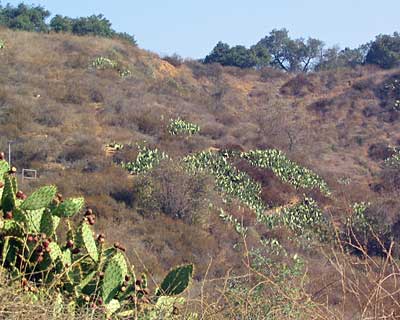 |
 |
|
COASTAL SAGE SCRUB
|
| Introduction | |
| Plant Communities of the Etiwanda Fan | |
| Amphibians and Reptiles of the Etiwanda Fan | |
| Birds of the Etiwanda Fan | |
| Mammals of the Etiwanda Fan | |
| References |
| San Bernardino County Museum - (909) 307-2669 - 2024 Orange Tree Lane, Redlands, California 92374 |
| © 2005 San Bernardino County Museum The information contained in the following pages was valid at the time of publication. The County of San Bernardino, Museum Department reserves the right to make changes and improvements at any time and without notice, and assumes no liability for damages incurred directly or indirectly as a result of errors, omissions or discrepancies. Please contact the webmaster with comments or suggestions. |
